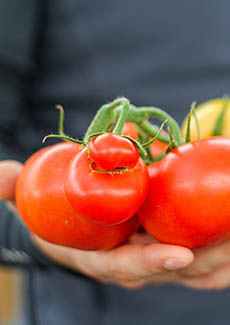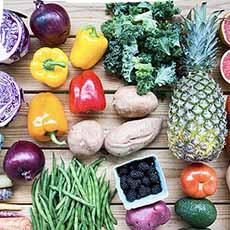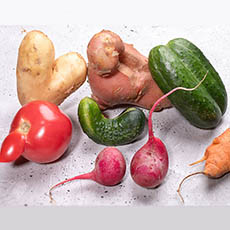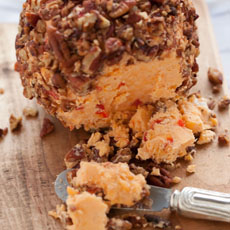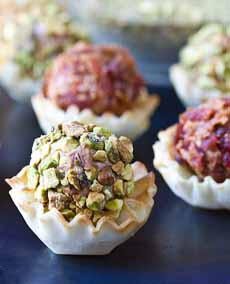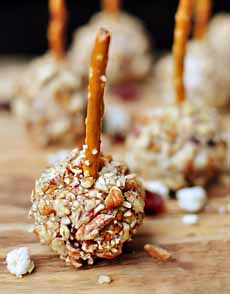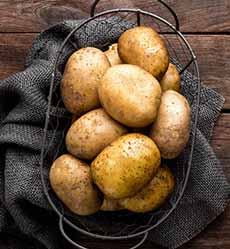|

[1] Mix the tartare, spoon it into the center of a romaine leaf, roll and enjoy (photo © Ardor Restaurant | Los Angeles).

[2] Sashimi-grade tuna loin (photo © Sea Delight).

[3] Look for baby romaine. You want something smaller than the large romaine leaves (photo © Good Eggs).

[4] Quail eggs (photo © To Table, a great resource for premium, hard-to-find ingredients).
 [5] Anchovies. Use a quality brand or they may taste fishy. These are Agostino Recca, available on Amazon and elsewhere (photo © Vital Choice).
[5] Anchovies. Use a quality brand or they may taste fishy. These are Agostino Recca, available on Amazon and elsewhere (photo © Vital Choice).

[6] Dijon mustard has the best flavor for a vinaigrette or dressing (photo © Maille).
|
|
We have a happy day whenever we discover a new and creative food preparation.
This one (photo #1), from Chef John Fraser of Ardor restaurant in Los Angeles, is a winner.
Chef Fraser does a mash-up of Korean barbecue and tuna tartare.
WHAT IS KOREAN BARBECUE
If you haven’t had Korean barbecue (BBQ), try to find it in your area—or come to New York City: We have tons of it!
Korean barbecue consists of thin slices of charcoal-grilled meat, served with a variety of condiments like ssamjang, a spicy paste of doenjang (Korean fermented soybean paste) mixed with gochujang (hot sauce/paste).
Place some paste on a romaine leaf, add the grilled meat, and roll it up burrito-style.
There are also side dishes, which you can eat from the bowl. Or, wrap some in the lettuce leaf with the meat.
A good restaurant serves at least five side dishes, called banchan.
Banchan can be anything the chef wants to serve, but typically consist of scallion salad, kimchi and pickled vegetables: cucumbers, daikon radish, peppers and other delight, like bean sprouts tossed with a bit sesame oil and garnished with toasted sesame seeds.
Banchan
Korean barbecue is low in calories, high in flavor, and one of our favorite foods.
MAKING KOREAN-FUSION TARTARE
RECIPE #1: KOREAN FUSION TARTARE
Make the tartare as a first course. Serve with saké, beer, white wine, green tea (especially houjicha) or Korean barley tea (boricha)—which is what you’d get at the restaurant.
Ingredients
Sushi grade salmon or tuna
Basil chiffonade or other herb (or thinly-sliced scallions if you’re not serving scallion salad)
Capers
Minced chives
Minced olives
Minced flat-leaf parsley
Quail eggs
Anchovy mustard (substitute rice vinegar-sesame oil vinaigrette or this lime vinaigrette)
Romaine leaves*
Option: any banchan you like
Preparation
1. MAKE the optional banchan: anchovies (if you don’t make the anchovy mustard) scallion salad, marinated cucumbers, radish, etc. Let the marinated vegetables sit overnight.
Here’s how to make pickled vegetables. If you like, you can toss red chile flakes, dill, etc. into any particular marinade.
Serve the banchan in small bowls, as they do in Korean restaurants.
2. CHOP the fish finely, from sushi-grade tuna or salmon. You want very small pieces (see photo #1).
3. PLACE the tartare in a bowl and add a cracked quail egg in the center. Top the tartare with the capers, chives, olives. Serve the anchovy mustard† on the side.
RECIPE #2: ANCHOVY MUSTARD
In addition to mixing some into the tartare, you can also use this dressing with green salads, fish, pork chops, grilled romaine, add it to a pan sauce, etc.
If you don’t like anchovies, try this lime vinaigrette or simple a simple sesame vinaigrette with 2 parts olive oil, 1 part dark sesame oil, and 2 parts rice vinegar.
Ingredients
2 garlic cloves, finely chopped
6 anchovy fillets, finely chopped (use a good brand—cheap brands are too fishy)
1 tablespoon Dijon mustard
4 teaspoons fresh lemon juice, more to taste
½ cup extra-virgin olive oil
Kosher salt and black pepper, as needed
Preparation
1. USE a mortar and pestle to make a paste of the garlic. Add a pinch of salt. If you don and have a mortar and pestle, use the flat side of a knife.
2. WHISK together in a small bowl the garlic paste, anchovies, mustard and lemon juice. Slowly whisk in the oil until combined. Less oil creates a paste as in the photo. More oil makes a pourable dressing.
3. TASTE and season with salt and pepper, and more lemon juice as desired (or use the zest).
________________
*Look for baby romaine, or use the smaller center leaves of a regular head. Smaller leaves are the right size for tartare.
†Mustard and anchovies are ingredients in a classic tartare.
|
